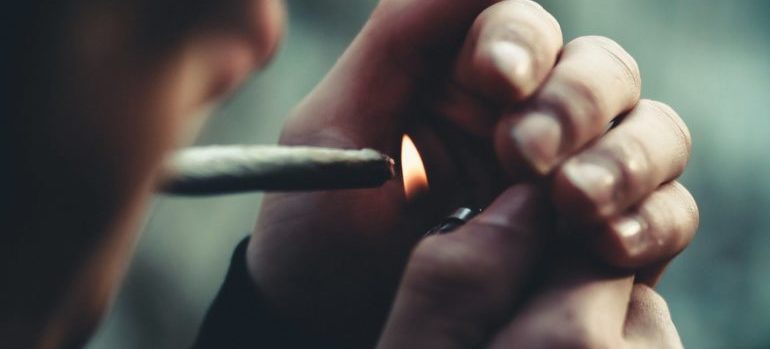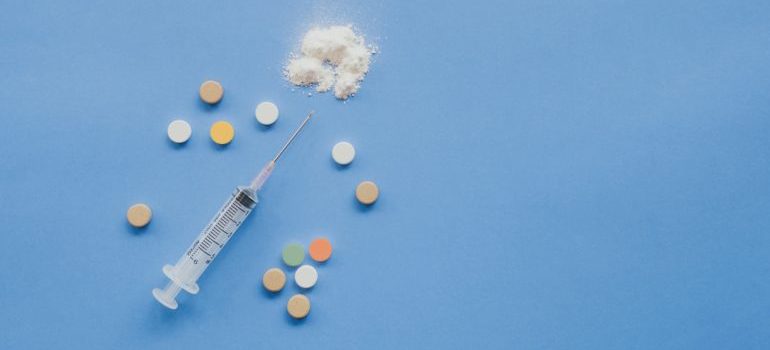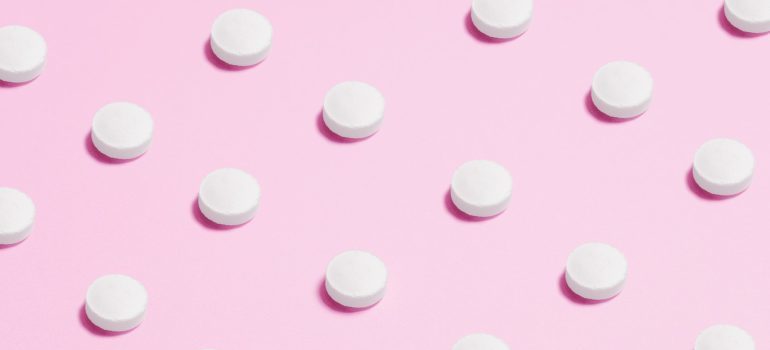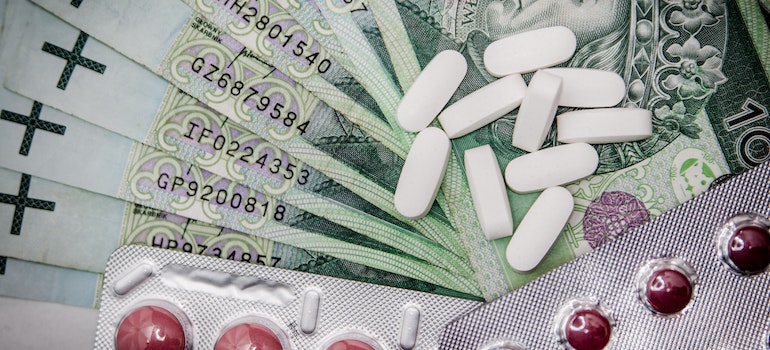Since nobody in this world is immune to suffering, many of us have developed various coping mechanisms. Some of these coping mechanisms can be beneficial, while others can be extremely harmful. That said, in spite of the fact that healthier coping mechanisms are more difficult and inconvenient in the short term, they are better for us in the long run. The destructive coping mechanisms, on the other hand, are much easier and quicker, which makes them dangerous. Self-harm and substance abuse are two of the most dangerous and yet most common coping mechanisms humans have. What makes matters worse is that people frequently engage in both. For this reason, we have decided to explore the connection between self-harm and addiction. We hope that by doing so, we will be able to assist as many people as possible in breaking free from the cycle of abuse.
What Exactly Is Addiction?
Substance use disorders(SUD) are a major public health issue around the world. According to the World Health Organization (WHO), over 180 million people suffer from SUDs. The most common substances involved include alcohol, opioids, nicotine, marijuana, cocaine, and benzodiazepines. Addiction, however, it is not limited to the misuse of legal or illegal substances. It also includes engaging in potentially harmful activities like sexual activity or gambling. Addiction cannot be treated without the assistance of trained professionals. And when addictions aren’t treated, they only get worse and more dangerous. Although there is no such thing as a “cure” for addiction, many people who engage in group therapy for addiction, in addition to other forms of treatment are able to lead productive lives thereafter.

What Is Considered Self-harm?
Self-harm refers to any behavior in which a person intentionally causes physical harm to themselves. People often wrongly assume that those who self-harm are attempting suicide. However, while this may be the case for some people who self-harm, the vast majority do not suffer from suicidal thoughts or intentions. Self-harm is a coping mechanism for many individuals, a means to regain some sense of control in the face of tragedy or unexpected pain and stress. In the short term at least, the individual feels in control, and the agony the self-harm causes serves as a diversion from their emotional distress.
As we’ve said, people who harm themselves intentionally are not invariably suicidal. Someone who self-harms may not want to die, but due to the potentially lethal nature of certain self-harming behaviors, this is not out of the question. This is particularly common with more severe kinds of self-harm, even when the person engaging in it did not set out to do permanent injury to themselves.
Identification of Self-Harm
Contrary to popular belief, self-harm is not a diagnosable mental disorder but rather a symptom of other mental health issues. Anxiety, depression, eating disorders, BPD, and PTSD are all risk factors for self-harm. When people who have issues don’t address the underlying problems the harmful habits often worsen over time. Furthermore, since self-harm is a coping mechanism, it may become more frequent and severe as a person’s mental health worsens. This may lead to an increase in total danger. In addition, the presence of drugs or alcohol may lead to a rise in destructive conduct, increasing the risk of serious injury.

Substance abuse is a common factor in self-harm cases when the victim injures oneself more severely than expected. Those who are abusing substances and engaging in self-harm put themselves in danger and should get help at a center for rehab in Charleston WV. This is the only way to stop the cycle before it gets out of hand.
Disorders Related to the Self-Injury Cycle
As we’ve said, self-harm often comes as a result of the presence of a mental health condition. Self-harm is often an effort to cope with or release intense emotions like rage, frustration, despair, fear, etc. Self-injurers often report feeling compelled or overwhelmed by the need to hurt themselves. Self-harm may leave a person feeling guilty or ashamed, which might lead them to engage in even more extreme or protracted acts of self-harm in the future. When someone repeatedly harms themselves, they may feel trapped in an endless loop. It has a lot of the same components as drug addiction and has many of the same symptoms. In fact, turning to drugs is one way for people who self-harm to escape the destructive feelings that drive them to act in this way.
The Influence of Drug Abuse on Self-Harm
There is a close link between substance abuse and self-harm. Those who have had traumatic life experiences, such as abuse or neglect, or who suffer from mental health issues, such as depression, anxiety, or eating disorders, have a higher risk of self-harm. The same is true for people who suffer from substance abuse and addiction. What this ultimately means is that people who abuse substances are more likely to hurt themselves. If someone is already drunk, they may be more likely to hurt themselves. It’s possible that substance abuse can amplify the effects of accidental self-harm as well.

1. Alcohol and Self-Harm
The researchers at the alcohol rehab center near Fairmont WV found that self-injury is often connected to alcohol use. In fact, there is a correlation between heavy alcohol usage and suicidal tendencies. Alcohol use has also been linked to the following potentially harmful behaviors:
- Aggression
- Mood instability
- Poor judgment
These alterations in the mental capacity that occur during alcohol intoxication provide a solid groundwork for destructive behavior. If you are someone who has a history of self-harm and alcohol use, you may find that the negative effects of alcohol, such as irritability, depression, and poor decision-making, make it more difficult to resort to more positive coping mechanisms. For this reason, seeking out alcohol rehab Clarksburg WV is a good idea.
2. Stimulants and Self-Harm
Self-harm is also associated with the abuse of stimulants like cocaine and methamphetamine, as well as ADD and ADHD drugs. This process is different from that of alcohol abuse. Self-injury may be more likely to occur while under the influence of stimulants and after usage has stopped. Stimulant intoxication is associated with extreme anxiety, distorted beliefs, and paranoia. As a result of these symptoms, the individual may become dangerously detached from reality. In addition, the withdrawal symptoms that occur after drug use is discontinued can cause intense feelings of depression and hopelessness, which can fuel thoughts of suicide and the urge to self-harm. That being said, drug rehab that accepts Tricare insurance can aid in overcoming this type of issue.

3. Hallucinogens and Self-Harm
The vast majority of users seek out hallucinogens for therapeutic purposes, such as:
- Warped sense of time
- feeling more attuned to oneself and the world
- Enjoyable hallucinations
However, bad trips, which are dangerous hallucinogen reactions, do occur on occasion. In the worst-case scenario, people can start having intense anxiety or panic attacks, paranoia, delusions, or feelings of losing control. In extreme cases, these bad trips lead to violent and aggressive behavior toward oneself or others. That said, sometimes even prescription drugs can cause hallucinogenic effects. Drugs like Ambien, for instance, are notorious for their hallucinogenic side effects. Thankfully, Ambien rehab is becoming more mainstream, so there is now a treatment option available for people who experience this problem.
4. Opioids and Self-Harm
Many people become addicted to pain relievers such as Fentanyl and illegal drugs like heroin. These opioids can help numb certain types of pain. However, they also have a slew of side effects. It’s possible that getting high on opioids might lead to:
- Lack of interest in things that used to be fun
- Depression after the first euphoria
- Poor decision-making
The use of opioids causes the brain to produce endorphins, which increase emotions such as pleasure. In fact, this suggests that both opioids and self-harm have the same biological mechanism. They numb one kind of pain but have lasting negative effects. This is why looking into fentanyl detox treatment is necessary for anyone suffering from an addiction to it. It may appear to be beneficial at first, but it is most likely causing more harm than good.

5. The Addictive Nature of Self-harm Itself
The term “behavioral addiction” probably makes you think of things like gambling, shopping, or even social media. However, believe it or not, self-harm is can become a behavioral addiction. Addiction is defined by the American Addiction Center as “the drive to repeatedly participate in an activity or behavior despite the detrimental effect on the individual’s ability to be mentally and/or physically healthy and functioning.” For some people, this includes intentionally hurting themselves. Many people who self-harm, especially those who are already susceptible to or abuse substances, end up developing a dependency on self-harm as a coping mechanism.
Prevention of Self-harm
Similar information, support, and preventive measures that work against other harmful behaviors and diseases may also work against self-harm. However, what makes preventing self-harm difficult is the fact that it is so hard to spot. No one can know for sure whether another person is having difficulty. Most people who harm themselves are afraid and ashamed. In addition to that, they are a master at concealing the parts of themselves that they want to keep secret. Having said that, there are indicators that someone is likely to commit self-harm.
For instance, people who have experienced trauma, have mental health issues, or have had suicidal thoughts or actions in the past are at a higher risk. Additionally, if you suspect a loved one is in danger of self-harm, you should check for warning signs and think about getting treatment for them. Look for cuts, burns, scratches, scars, etc., that they may not be willing to discuss with you.
Addiction Prevention
Most people can avoid addiction by simply never starting to use drugs in the first place. This is why prevention is so crucial but also so difficult. Mental illness, peer pressure, emotional distress, and an absence of social support are just some of the potential precursors to substance abuse. Reasons for this behavior may include a search for relief from symptoms, pressure from peers, boredom, or a desire to try something different. Addiction can strike anyone, and it can be difficult to stop in its tracks without assistance. Addiction is not selective; it strikes people of all ages, genders, races, and cultures equally.
Recovery from Substance Abuse and Self-Harm
Self-harm and co-occurring substance abuse disorders may be difficult to treat, but with the right approaches, patients might experience relief from their symptoms. The goal of treatment is to reduce or eliminate the need for destructive coping mechanisms like self-harm or drug abuse. Due to the fact that self-harm is often a symptom of further mental health issues, the first step in recovery will be a comprehensive examination to determine which mental health issues, if any, have a bearing on the individual’s tendency to self-harm or develop an addiction.

By treating the underlying mental condition, self-injury and substance use may also decrease. Professionals may use a combination of psychotherapy/group therapy and medication to address the thoughts, feelings, and behaviors of the person to create and reinforce healthy coping skills. With new coping skills and a relapse prevention plan, the individual will have the ability to manage intense emotions without relying on self-harm or substance use. With Humana rehab coverage, patients can get all the necessary resources for a full recovery.
Conclusion
Now that we have outlined the connection between self-harm and addiction, it is clear that the two disorders are connected in many ways. Individuals who struggle with self-harm are more likely to develop an addiction and vice versa. It is important to remember, however, that not everyone who struggles with addiction also struggles with self-harm. At the same time, not everyone who struggles with self-harm has an addiction. Self-harm and addiction are complex disorders that necessitate individualized treatment. Through a combination of psychotherapy and medication, it is possible to recover from both addictions and self-harm. As a result, it is critical to seek professional treatment for co-occurring disorders as soon as possible in order to improve recovery chances. If you or a loved one is struggling with either of these issues, please seek assistance. Harmony Ridge Recovery Center in WV is here to help you find the best path to a happier life.



